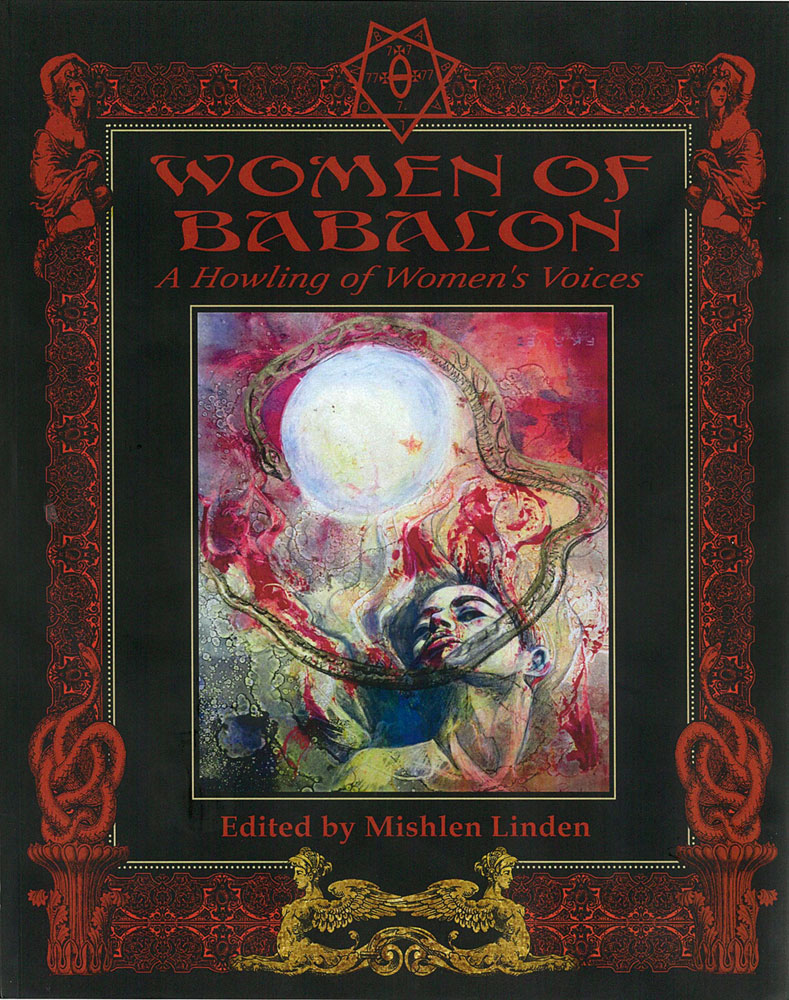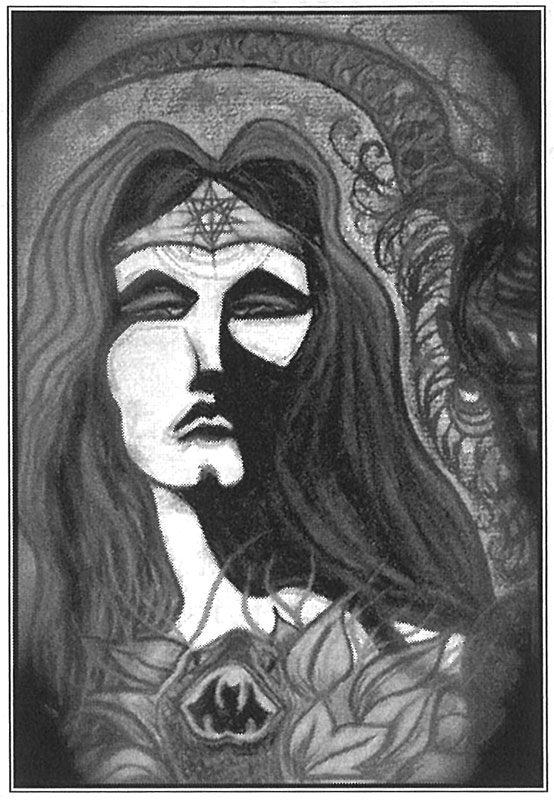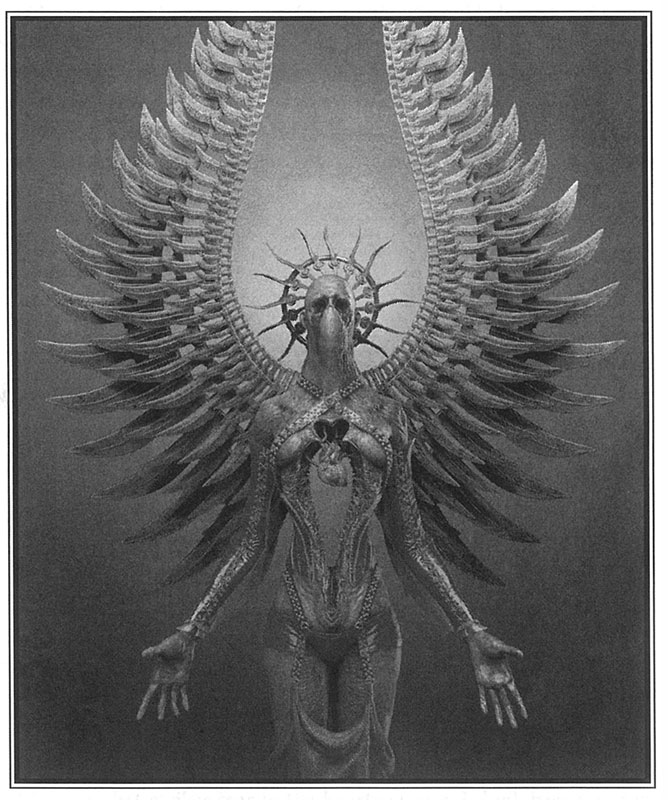 It would be fair to say that over the years, more has been written about Babalon by men, than by women, with her most obvious devotees being two very prominent men within magick, Aleister Crowley and Jack Parsons. One could argue that this has led to a very particular view of Babalon, and Scarlet Women in general, whether they are envisioned as the heterosexual lover of the male supplicant, or a muse or Shakti-type figure whose identity is only understood or activated via a relationship with a male figure. This volume seeks to address this, bringing together seventeen women to speak with the voice of Babalon. That isn’t to say that Babalon is the sole choice of subject here, and whilst she certainly plays a central part, other areas of magick and occultism get their chance to shine. Rather, this is about giving matters of magick, specifically where they relate directly or tangentially to Babalon’s ambit, a specifically female voice.
It would be fair to say that over the years, more has been written about Babalon by men, than by women, with her most obvious devotees being two very prominent men within magick, Aleister Crowley and Jack Parsons. One could argue that this has led to a very particular view of Babalon, and Scarlet Women in general, whether they are envisioned as the heterosexual lover of the male supplicant, or a muse or Shakti-type figure whose identity is only understood or activated via a relationship with a male figure. This volume seeks to address this, bringing together seventeen women to speak with the voice of Babalon. That isn’t to say that Babalon is the sole choice of subject here, and whilst she certainly plays a central part, other areas of magick and occultism get their chance to shine. Rather, this is about giving matters of magick, specifically where they relate directly or tangentially to Babalon’s ambit, a specifically female voice.
With thirteen written contributions, and eleven illustrations, there is a range of styles and subject matters presented here, with sex and art featuring heavily. Linda Falorio provides a couple of tantric techniques, including a Tree of Night Tantra via Eroto-Comatose Orgasmica, no less, while both Charlotte Rodgers and Emma Doeve briefly explore different and intersecting aspects of sex magick; and in the case of Doeve, power relationships. Doeve also contributes another piece in which she gives a brief biography of the surrealist artist Leonora Carrington and surveys her works. In matters of a more, shall we say, theographical nature, Diane Narraway has an extensive devotional essay on Lucifer, giving the Lightbringer a relatively brief but satisfying biography, flavoured with personal reflections. Maegdlyn Morris writes of the Warrior Babalon, addressing her as the Babalon of Severity, of Geburah, in a piece which, with its slightly polemical celebration of the Red Goddess as spirit of rebellion and heresy, reminds of Peter Grey’s similar approach.
The longest contribution in Women of Babalon is provided by editor, Mishlen Linden, who allows the reader access to her magickal record with an extended excerpt, all forty pages of it. Subtitled Building the Body of Babalon, it tracks a yearlong tantric exploration between Linden and her priest with an engaging narrative, highlighting the importance of keeping a magickal record, in which a discernible evolution of practice and results is laid bare. Despite it being a personal record, the level of exposition and instruction within the text means that the sense of voyeurism is minimal, as if it was always, on some level, intended for publication.
Of these Women of Babalon, it is Lou Hotchkiss Knives who provides the most enjoyable piece with “Watch Her Wrap Her Legs Arounds This World,” which bears the exhaustive subtitle Babalon, Sex, Death, Conception, Punk Rock and the Mysteries. As said subtitle suggests, this is a wide-ranging, five-part piece, and one that is expertly written in an informed, knowledgeable manner that never loses its audience despite its length. Perhaps my bias and expectation is showing, but the piece succeeds because its focus is explicitly on Babalon, providing me with everything I hoped to find in this volume. Hotchkiss Knives begins with an account of a dream of Babalon manifesting as her daughter, lost to miscarriage and now existing as a moonchild whose face is only seen in the no-man’s land of oneiric journeys. In many ways, this is a highly personal and affecting reflectiont, but Hotchkiss Knives ably contextualises and transmutes it within a magickal and thoroughly Babalonian framework. She follows this with an exploration of Babalon within a Qabalistic context, tracing her influence through the sephira and linking this to suitably Babalonian imagery in the tarot. These personal and Qabalistic preambles then give way to Hotchkiss Knives’ primary discussion concerning the spirit of Babalon within music and identifying punk and riot grrrl as particular expressions of her energy. Nina Hagen, the Slits, all the way up to Courtney Love and the appositely named Hole are name-checked as examples of this musical-magickal Babalonian nexus. With experience in her own punk band, Husband N Knives, Hotchkiss Knives is able to speak from an experiential perspective about the magickal power of music, shooting it through with a passion that makes you almost forgive the mention of the Red Hot Chilli Peppers; almost.
Women of Babalon follows what seems to be the Black Moon Publishing style du jour, using a large ornamental border on every page. This has the effect of enlarging the overall dimensions of the book itself but still shrinking the column widths to below average. Coupled with a rather large body typeface, this can lead to a feeling of there being less than a typical amount of content per page. Personally, I could do without the rococo border. It’s one of those things that may have initially seemed like a good idea, but ultimately, there are reasons that convention prevails and you don’t see a lot of books formatted like that. The resulting over-sized format also makes the entire book cumbersome to hold, limiting the environments in which it can be conveniently and comfortably read. As someone who takes great pride in having her read books look like they’re unread, the wear and tear that came as a result of this was knife-in-the-stomach-noticeable. The large border also precludes the use of standard page furniture, other than page numbers, so a constant return to the contents page is required to find your way to a particular contribution without the ability to give a quick glance at a header or footer.
There are a range of illustrations doted throughout the book, though they are by no means a focus here. Their impact is lessened by the aforementioned rococo border which both reduces the potential size of the images and tends to overwhelm them. The most successful of these is Madeleine Ledespencer’s And you shall see the shades which she becomes, in which her polished 3D render contrasts with the more brush and acrylics stylings that accompany it.
Despite its wealth of contributors, there is a certain similitude that emerges from these voices, with the many women of Babalon forming an almost audible choir. There are things that act almost as refrains, to continue the laboured analogy, with sex, tantra, chakras and kundalini being common touchstones. There is diversity amongst the voices, and while there is by no means a sense of an enforced perspective, there is a palpable sense of shared experiences and similar world views.
Published by Black Moon Publishing



very informative, thank you. Would love to read it.
An outstanding review of a truly remarkable – and long overdue – book! As patriarchal mindsets worldwide convulse in their chaotic death throes, it is most important that we elevate the voices of women speaking out in praise of the Divine Feminine! Praise be to Babalon!